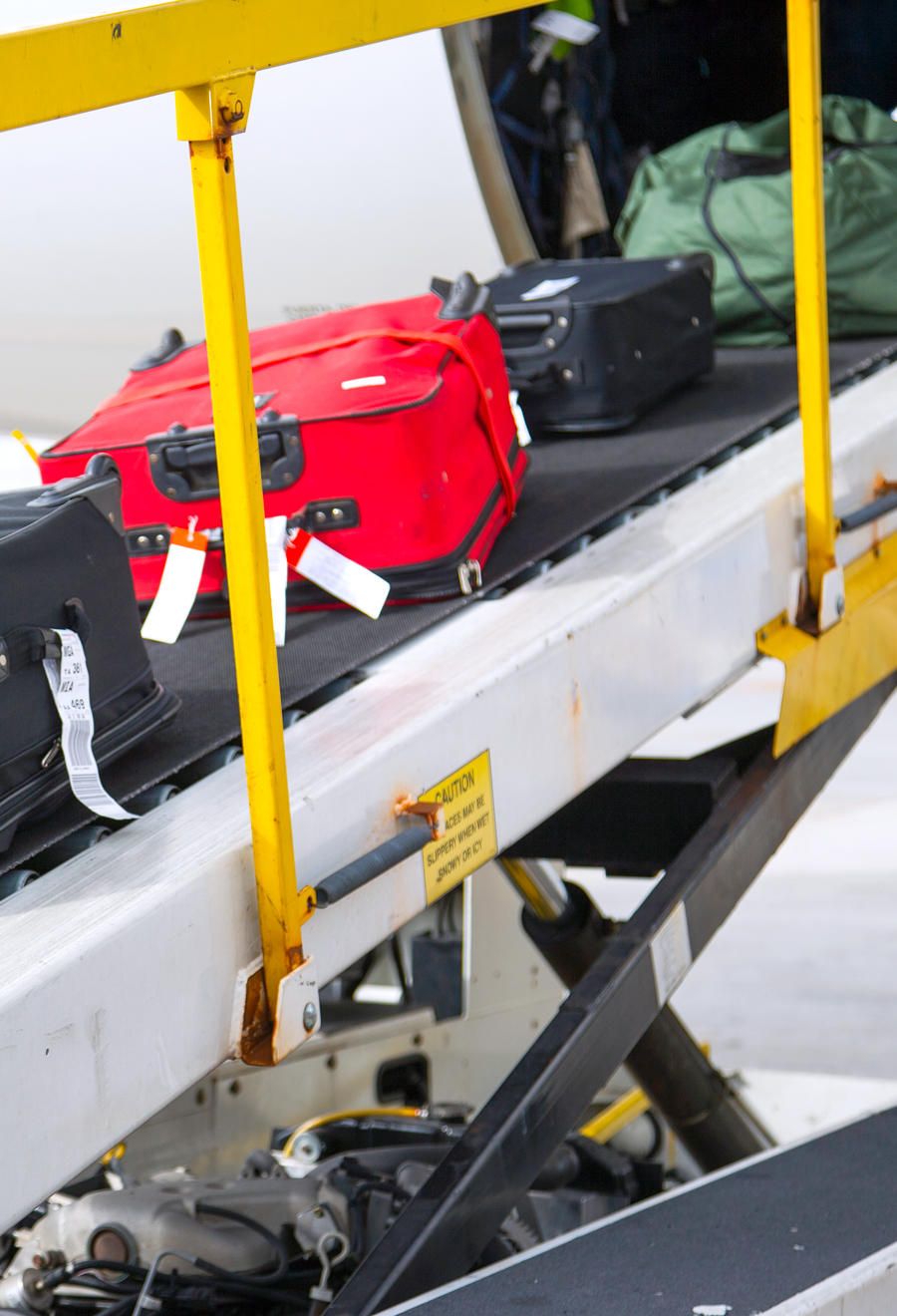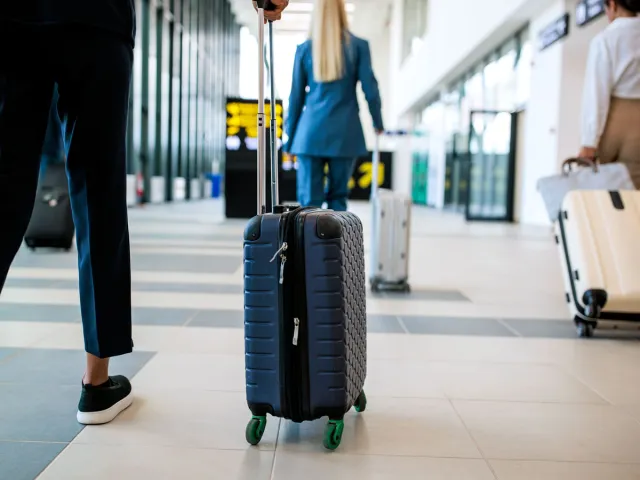You’ve likely checked a bag on countless flights without giving it much thought. Except in rare cases, your bag will be waiting for you right there on the baggage carousel after you land. But have you ever wondered what exactly happens in the interim, and how airlines keep track of your luggage and so many other bags? Recent reports show that more than 99% of luggage arrives at its destination without being delayed or mishandled, suggesting that airlines have a sophisticated system in place to ensure success. Here’s a behind-the-scenes look at what happens to your bag whenever you check it at the airport.
The Bag Check Process Begins
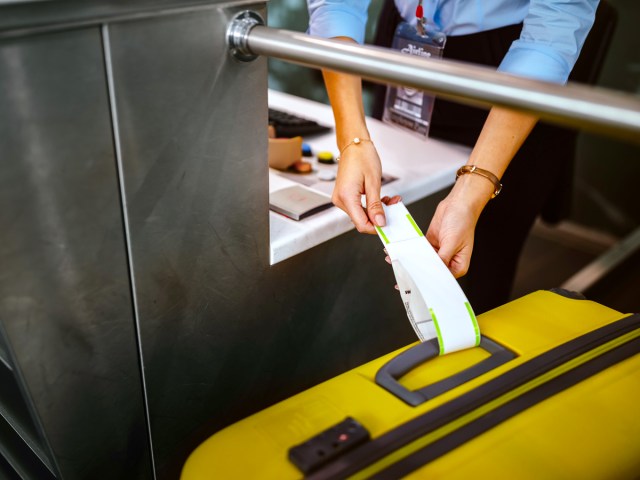
During check-in, either you’ll see an airport customer service agent, who can print and affix a luggage tag to your bag, or you’ll use a self-service kiosk to do the same before dropping it at the counter. The bag tag contains important information such as your name, the airline and flight number you’ll be flying on, and the airport code of where you and your bag will be flying to.
These tags also feature barcodes that can be scanned by employees or computers to make the sorting and tracking process more efficient. The barcodes contain a baggage tag issuer code (known as a BTIC), a code for the baggage type, and your bag’s specific ID number. Once you’ve affixed the tag to your luggage, it’ll be sent down the conveyor belt for security screening, sorting, and loading onto the aircraft.
Security Screening
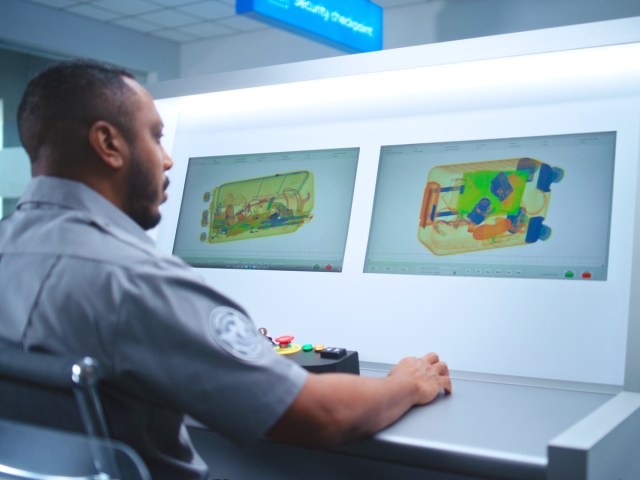
Usually, the first step of the process that happens behind the scenes is a security screening. Your checked luggage is run through an X-ray machine or CT scanner, and most bags are quickly sent on their way.
In some cases, however, an agent may pull your bag aside to perform a physical inspection. Most times, this is just an added precaution, and once agents search the bag, they will zip up your luggage and send it on its way for sorting.
Sometimes, however, security officers might find a prohibited item and either confiscate it, or notify airline representatives to discuss potential consequences with you. If any physical inspection is performed, TSA personnel will slip a notice into the luggage to alert you that a more thorough screening occurred behind the scenes.
Sorting Your Luggage
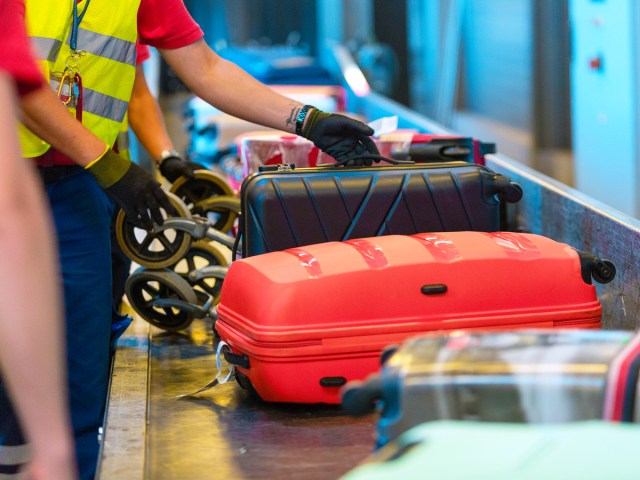
Once the luggage has passed the security inspection, it’s time for it to be sorted onto the right flight. Typically, an automated computer system scans the luggage tag in order to determine where the bag needs to go, before the bag is sent along the appropriate conveyor belt.
At busier hubs, these conveyor belt systems can be massive. For example, at Toronto Pearson International Airport — Canada’s busiest airport — there are over 18 miles of conveyor belts, which carried more than 100,000 bags each day in 2019. Humans and security cameras monitor the system to ensure the bags are moving as they need to. In the event that your bag falls off the conveyor belt or another issue arises, the tag will be rescanned to gather information, after which the luggage is sent along once again to the appropriate destination.
If your flight isn’t for several hours, your luggage may be set aside in a safe location until it’s time to load it on the plane. Rest assured that employees are trained to keep a watchful eye on the luggage and security cameras to ensure that the luggage moves efficiently to where it needs to go.
Loading and Emptying the Plane
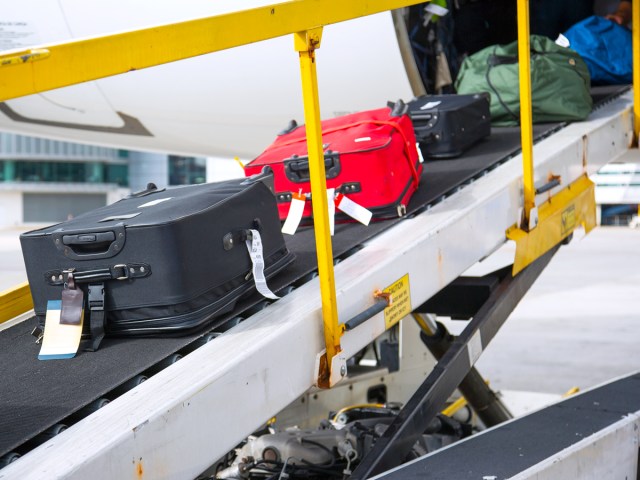
After the bags have been properly sorted, baggage handlers take the sorted luggage, load it onto a baggage cart, and drive it along the tarmac to the correct aircraft for loading prior to departure.
At the other end of the journey, a different group of baggage handlers unloads the luggage from the aircraft upon arrival at the terminal and brings it to the airport’s baggage sorting system. Inside the sorting facility, the crew places all of the luggage onto a conveyor belt system that takes it to the baggage claim area. Each bag pops out of a chute and onto the appropriate baggage carousel, where passengers can pick it up — hopefully within a reasonable time frame — and continue on their journeys.
According to a report from The New York Times, it takes anywhere from 15 minutes to 45 minutes on average after the airplane arrives at the gate for bags to reach the baggage claim area. The time frame is influenced by factors such as the size of the airport and how modern its sorting systems are. Some airlines, like Delta and Alaska, guarantee that customers will receive their bags in 20 minutes or less. If it takes longer, passengers can submit a claim for rewards miles or a voucher as compensation.
Potential Delays

While the checked baggage process often runs smoothly, there are some common mishaps that may cause delays. A staffing shortage may lead to longer wait times, as each crew member can only handle so many bags at once. Extreme weather conditions may also inhibit crew members from doing their job, as they won’t be able to bring luggage out onto the tarmac during lightning or a torrential downpour, for example.
Another issue that may arise? A traffic jam on the luggage conveyor belt. Loose bits of metal or string may get caught in the sorting mechanism, causing luggage to get stuck and even trapped in a large pile-up.
Passengers can take precautions at home to lessen the likelihood that this happens, though. Toronto’s Pearson Airport recommends making sure that there are no loose straps dangling off the side of your bag — or any other features that may get caught up in the machine and potentially cause delays.
Lost Luggage: What Should You Do?
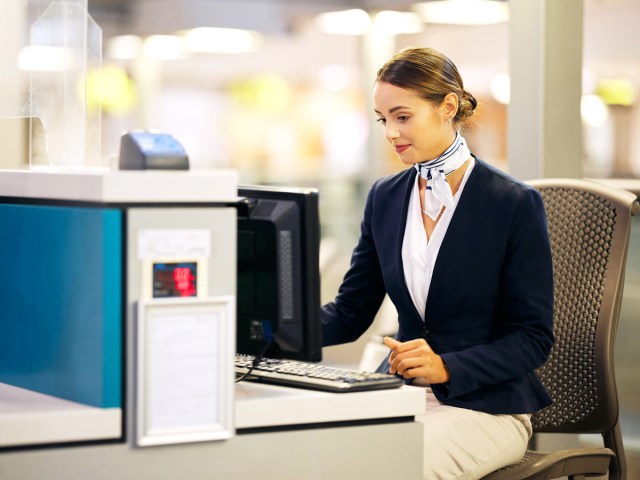
Though it’s a rare occurrence, in the event that your checked luggage gets delayed or lost, there are several steps you can take to track down your bag.
Before heading to the customer service counter, however, try checking the airline’s app. Some airlines — including Southwest, American, Delta, and United — offer live baggage tracking on their apps, updating you on the status of your bag throughout its journey. Or you may be one step ahead of the airline and have already placed an Apple AirTag or a similar tracking device inside your luggage — something we recommend you always do when checking a bag.
But even if you’ve checked the app or spoken to an airline representative at the airport or on your phone, you may not be able to locate your bag right away. You may need to file a claim before leaving the airport. Be sure you receive a claim number and provide your contact and hotel or residence information, so you can check in on the airline’s progress in finding your luggage and they can promptly deliver it to you once it’s located.
If you still haven’t received an update the next day, you may be eligible to file a claim to receive compensation for delayed or missing luggage. A claim can be filed in as little as 24 hours for most domestic flights, and a week for international travel. You can also contact the TSA directly for additional information, as they can investigate the claim and provide you with pertinent details should anything arise.
More from our network
Daily Passport is part of Inbox Studio, which publishes content that uplifts, informs, and inspires.






